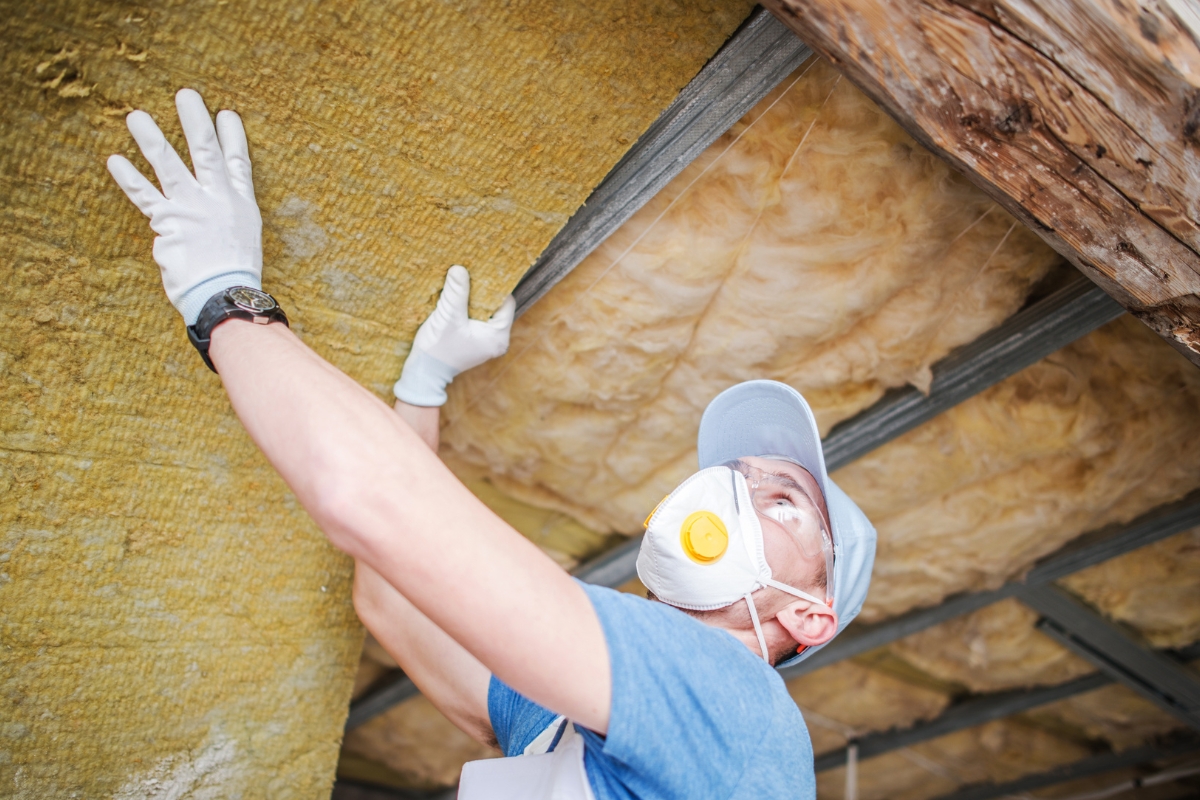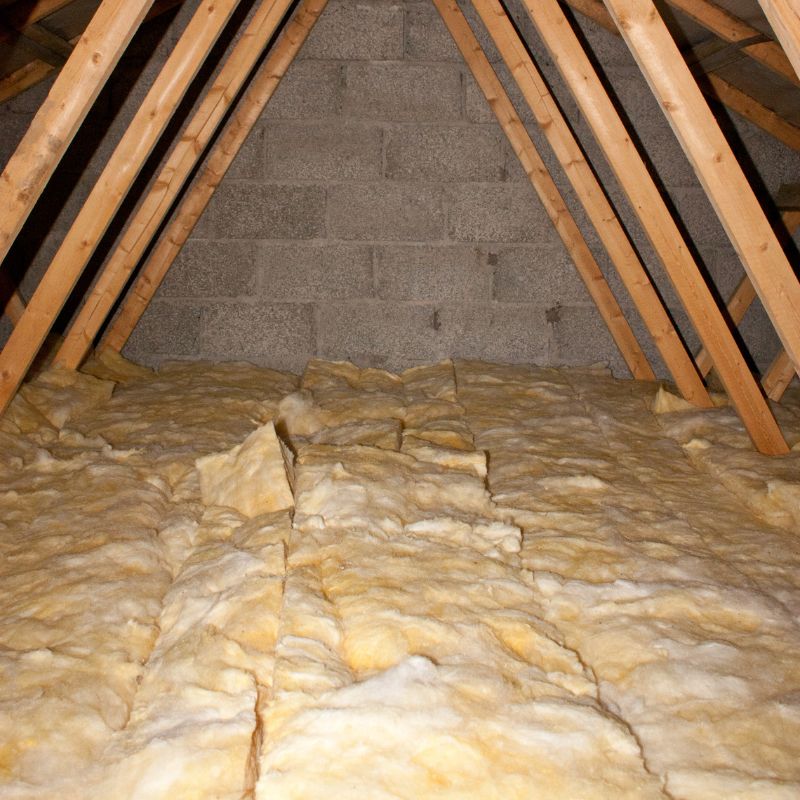Colleyville Attic Insulation Service: Trusted By The Locals
Experience top-notch attic insulation services trusted by homeowners in Colleyville. Our skilled professionals specialize in efficient insulation installation, replacement, and repairs, using high-quality materials like spray foam, blown-in, and radiant barrier insulation. We help you lower energy bills, improve indoor comfort, and enhance your home’s efficiency.
With a reputation for exceptional service and lasting results, we are the go-to insulation experts in Colleyville. Whether you need new insulation or upgrades, you can count on us for reliable, affordable, and effective solutions. Trust Colleyville’s local attic insulation specialists for superior comfort and energy savings.
Your Trusted Attic Insulation Company in Colleyville
Ensure year-round comfort and energy efficiency with Colleyville’s leading attic insulation experts. We specialize in high-quality insulation installation, replacement, and repair services tailored to meet your home’s specific needs. Our team uses top-grade materials like spray foam, blown-in, and radiant barrier insulation to enhance your home’s thermal performance and lower energy costs.
With our expert craftsmanship and customer-first approach, you can trust us to deliver long-lasting insulation solutions that improve indoor comfort, reduce energy waste, and protect your home from moisture and air leaks. Choose Colleyville’s trusted insulation company for reliable, efficient, and professional service.
Understanding the Importance of Attic Insulation for Energy Efficiency
Wool insulation applied in the attic lowers energy costs by 20%. Advanced wool techniques improve wall and roof energy efficiency standards. Reliable attic solutions deliver 15% more savings; contact immediately.
How Insulation Reduces Energy Costs Year-Round
Powerful mineral wool and fiberglass cut heat transfer by 15%. Effective thermal insulation cuts air conditioning bills by 20% yearly. Fiberglass and mineral wool lower heat transfer by 10% overall.
Signs That Indicate Your Home Needs Better Insulation
Studies show 15% energy savings using spray foam with building insulation. Field tests record 10% savings with polystyrene and building insulation material. Data confirms 12% efficiency boost using structural insulated panels.
Importance of Proper Insulation for Air Quality
Skilled professionals design insulation to protect joist and crawl space. A proper radiant barrier prevents mildew growth and reduces harmful mold. Precision installation improves energy efficiency by 20% and air quality.
Contact Us For Full Service Insulation Service Experts
Choosing the Right Attic Insulation: Expert Insights on Fiberglass, Cellulose, Mineral Wool, and Spray Foam Solutions
Does the attic insulation in your home meet your energy efficiency goals? The article reviews key insulation types such as fiberglass, cellulose, mineral wool, and spray foam and clearly explains their benefits. It presents easy-to-understand comparisons and expert recommendations on cost, air sealing, and structural insulated panels. This guide directly addresses common concerns and offers practical insights to help readers choose the right attic insulation solution for their needs.
Understanding Different Types of Attic Insulation
This section covers fiberglass insulation using glass fibers known for fire safety and insulation effectiveness, cellulose insulation noted for its plastic-free properties and resistance to humidity, mineral wool recognized for stability and durability, and spray foam offering superior energy efficiency. Each type provides unique benefits, including sustainable denim-derived fibers in some products, ensuring a well-rounded view for attic insulation choices.

Overview of Fiberglass Insulation and Its Benefits
Fiberglass insulation remains a preferred building insulation material for many professionals due to its cost-effectiveness and reliability in moderating indoor temperatures. Experts note that its ability to prevent heat loss supports energy efficiency and sustainability goals while safely managing risks associated with asbestos contamination in older structures.
The material presents a practical alternative when compared to spray solutions, offering ease of installation and minimal waste during application. Industry specialists highlight that fiberglass provides consistent performance, ensuring a sound investment in long-term building comfort and reduced environmental impact.
Advantages of Mineral Wool Insulation in Attics
Mineral wool insulation offers significant benefits in attics, providing a robust barrier that improves airflow and minimizes condensation issues. Its design facilitates steady temperature regulation, ensuring comfort while reducing problems associated with dampness:
Airflow
Improved air circulation enhances energy savings
Condensation
Reduced moisture accumulation promotes long-term durability
Industry professionals note that mineral wool supports indoor air quality by minimizing dust and contaminants, akin to the performance seen in high-rated Energy Star products. Case studies indicate that installations incorporating this material, coupled with recycled paper insulation products, yield consistent comfort and maintenance ease for building owners.

Benefits of Spray Foam Insulation for Energy Efficiency
Spray foam insulation improves energy efficiency by sealing gaps and reducing heat loss around a radiator; professionals note that its quick application process allows for optimal performance while technicians wear a protective mask to ensure safety and focused attention to detail.
Industry experts report that spray foam insulation lowers utility expenses by preserving thermal integrity and supporting overall energy efficiency; its performance is particularly remarkable in homes featuring older radiator systems, providing a practical solution for modern insulation challenges.
The Importance of Air Sealing in Attic Insulation
This section highlights techniques for effective air sealing around insulation, identifies common air leakage in attics, and explains how proper ventilation boosts insulation performance. Practical insights cover the absorption benefits of polyurethane foam, fiber, and wool solutions, ensuring that these methods enhance efficiency and reduce energy loss.
Techniques for Effective Air Sealing Around Insulation
Expert contractors use sealing techniques that integrate air barriers around the foundation, joist spaces, and oriented strand board installations, ensuring a consistent and secure insulation system. This approach safeguards both energy performance and building health by minimizing drafts and heat loss during extreme weather conditions.
Practical methods involve applying a blanket of polyurethane foam or similar sealants to joint areas, which prevents air leakage and enhances overall efficiency. Field professionals note that maintaining tight seams in insulation installations is key to improving performance and preserving the structural integrity of the building.
Common Areas of Air Leakage in Attics
Contractors often observe that air leakage tends to occur near soffits, eaves, and poorly sealed joints during insulation installation. They stress that using materials like mineral wool, which features basalt fibers, minimizes gaps and irritation from dust particles, ensuring a more efficient barrier when combined with proper personal protective equipment such as goggles during handling.
Practitioners emphasize that inadequate sealing around ducts, pipes, and attic hatches is a common source of energy loss. They recommend that meticulous attention during insulation installation, along with targeted use of durable products, addresses these leaks effectively while reducing irritation for workers and improving overall thermal performance.
Expert Recommendations for Choosing the Right Insulation
Key considerations when selecting attic insulation include material performance, installation practices, and finding skilled contractors. Professionals share tips for installation and reliable resources for contractor searches, offering clear guidance on factors such as energy efficiency and durability. This overview paves the way for detailed insights in the following sections.
Factors to Consider When Selecting Attic Insulation
Homeowners need to evaluate the local climate, building structure, and energy requirements when selecting attic insulation. Industry professionals suggest that understanding the trade-offs between cost, performance, and ease of installation can guide homeowners toward a solution that meets both energy efficiency and long-term durability goals.
Experts emphasize that assessing material performance, including thermal resistance and moisture control, is vital for making informed decisions. Careful review of these factors helps ensure that the chosen insulation delivers a reliable barrier against energy loss while providing a cost-effective solution that minimizes long-term expenses.
Professional Tips on Insulation Installation
Experts emphasize that thorough preparation and proper safety measures are key when installing attic insulation. They recommend verifying measurements, using high-quality materials, and ensuring that all tools are ready before the installation begins,
Industry professionals advise using techniques that reduce waste and optimize performance, ensuring the insulation performs well under various conditions. They suggest consulting experts for complex setups and relying on proven methods to achieve reliable energy efficiency and environmental benefits.
Optimize Your Home’s Energy Efficiency with Attic Insulation
Upgrade your home with high-quality attic insulation designed for maximum energy efficiency and comfort. The right insulation helps regulate indoor temperatures, reduce energy waste, and lower your utility bills. Don’t let outdated or ineffective insulation drive up your energy costs—take control of your comfort today!
Call now for a free consultation!
Let our insulation experts assess your attic and recommend the best solution for your home.
